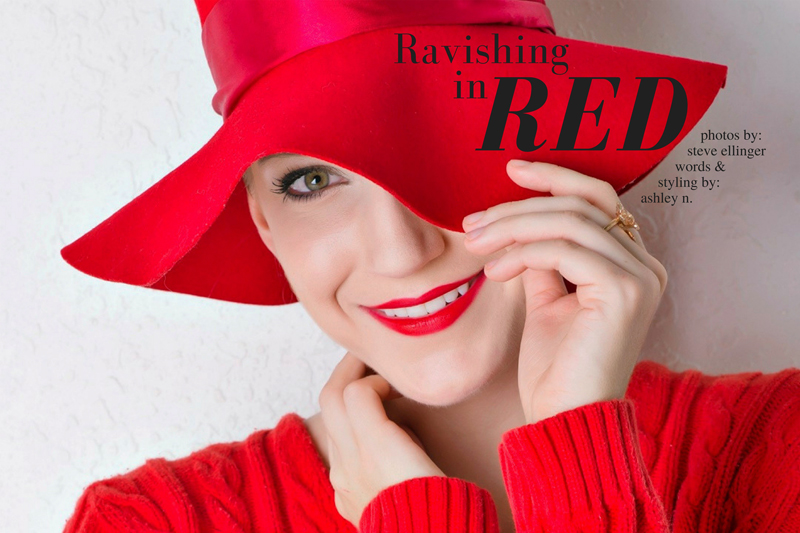I am a firm believer that a great photoshoot must involve more than just a great photographer. It takes a TEAM. A team of specialists that know what they are doing to make things happen. I am a fashion and agency testing photographer. Fashion and agency testing is of the most unique and misunderstood areas of photography, probably since so few do it, or the fact that it is a very difficult area in which to build a presence. We all see magazines and articles that are editorial in nature featuring models wearing the latest fashions. Did you ever wonder how those come to be, how they are organized and most importantly to you is how they are photographed?
Fashion editorials always begin with an idea. It can be simple, or very complex involving dozens of team members. I thought readers might like to follow how a recent editorial titled “Ravishing in RED” was produced. Like all editorial pieces, it starts with an idea. In this case, with the Fall season on the horizon, a very talented stylist, Ashley Nudge, represented by The Clutts Agency, a leading modeling agency, envisioned a piece focusing on how the bold color red would be a fashion trend this Fall. Ashley has a degree in Merchandising and Digital Retail from North Texas State University, so she knows this business well. Keep in mind that Fall and Winter fashion editorials are usually shot in the summer so they can be ready for seasonal catalogues and publications, so all of this was shot and produced this past summer.
To develop the “idea,” the stylist creates a “mood board,” a graphic visual tool that contains ideas of the desired looks. The moods can be from art, fashion, patterns, architecture (which compliments fashion directly), or any other visual cue that the designer can draw from. A well thought-out mood board will also indicate the sequencing of the shoot so that the wardrobe changes can flow. Once the mood board is finalized, the stylist will consult with the photographer so that lighting, backdrops, locations, etc., can be determined. The shoot will often take place a month or so after the mood board is complete so that there is ample to time scout locations and assemble the team.
An editorial shoot cannot work without a model, and I mean a great model. I work pretty much exclusively with agencies and agency models. Agency models know how to emote, move, understand the lighting, and how to pose to showcase a wardrobe or accessory. This is critical. It’s all about the fashion, and a good agency model understands that. When the model arrives at the studio or location, they usually have not seen the mood board. I generally have a five-minute team meeting to go over the mood and concept before the model goes into make-up and hair. As soon as the model is ready and dressed in the first wardrobe, he or she goes on-set for the first look.
My post production processing generally involves slight color balance if needed to get an accurate representation of the wardrobe, and cropping. Unlike most photography, fashion cropping breaks the rules. A fashion editorial is to promote the fashion, not the model. A technique that I, and most all fashion and agency photographers use is to slightly crop the tops of heads, feet, hands or whatever to draw attention to the wardrobe being shown. The model is secondary. The eyes must be drawn to the point of the image.
Most of you are saying, “But that’s not what we are taught to do,” and you would be correct. But fashion photography, like fashion itself is supposed to be creative and that means breaking the rules when necessary. I cannot tell you how many times I have been criticized because I crop “too tightly”. But when I explain why the psychology of the image works, people seem to understand but it’s still very foreign. In my class at the Texas School of Professional Photography, I am constantly told that applying a fashion crop is the hardest psychological barrier my students must overcome. For those of you wondering, I apply almost no retouch to the models. One of the things about agency models is that they are ready to go, good skin, complexions, figures, etc.
When looking at a fashion editorial in a magazine or on-line, it’s not always apparent that the image was created by a team of people to make it happen. The team is critical. Viewers see the model, but they also see the work by the behind the scenes team that scrutinize every detail, making it look simple. Job well done.
